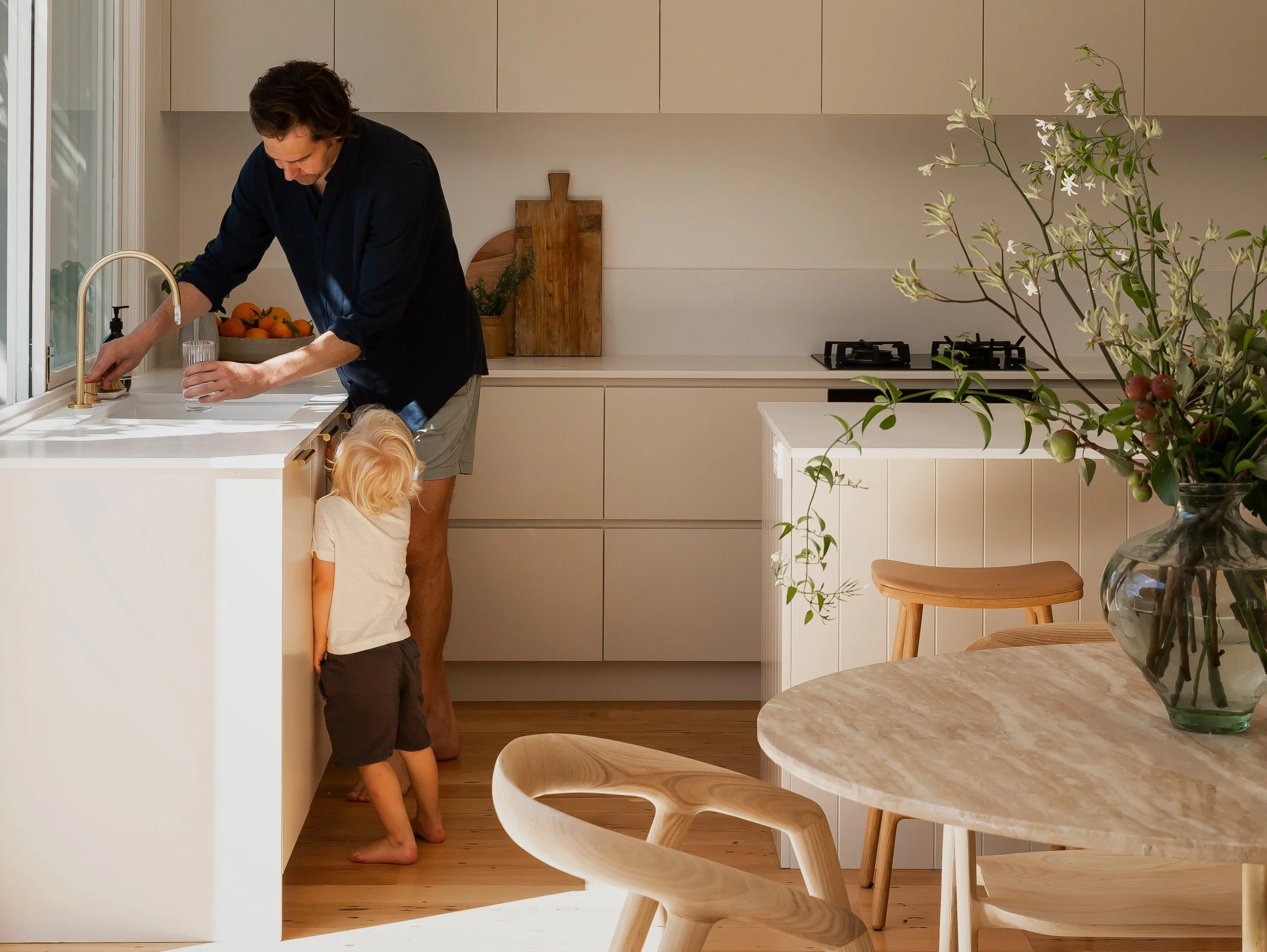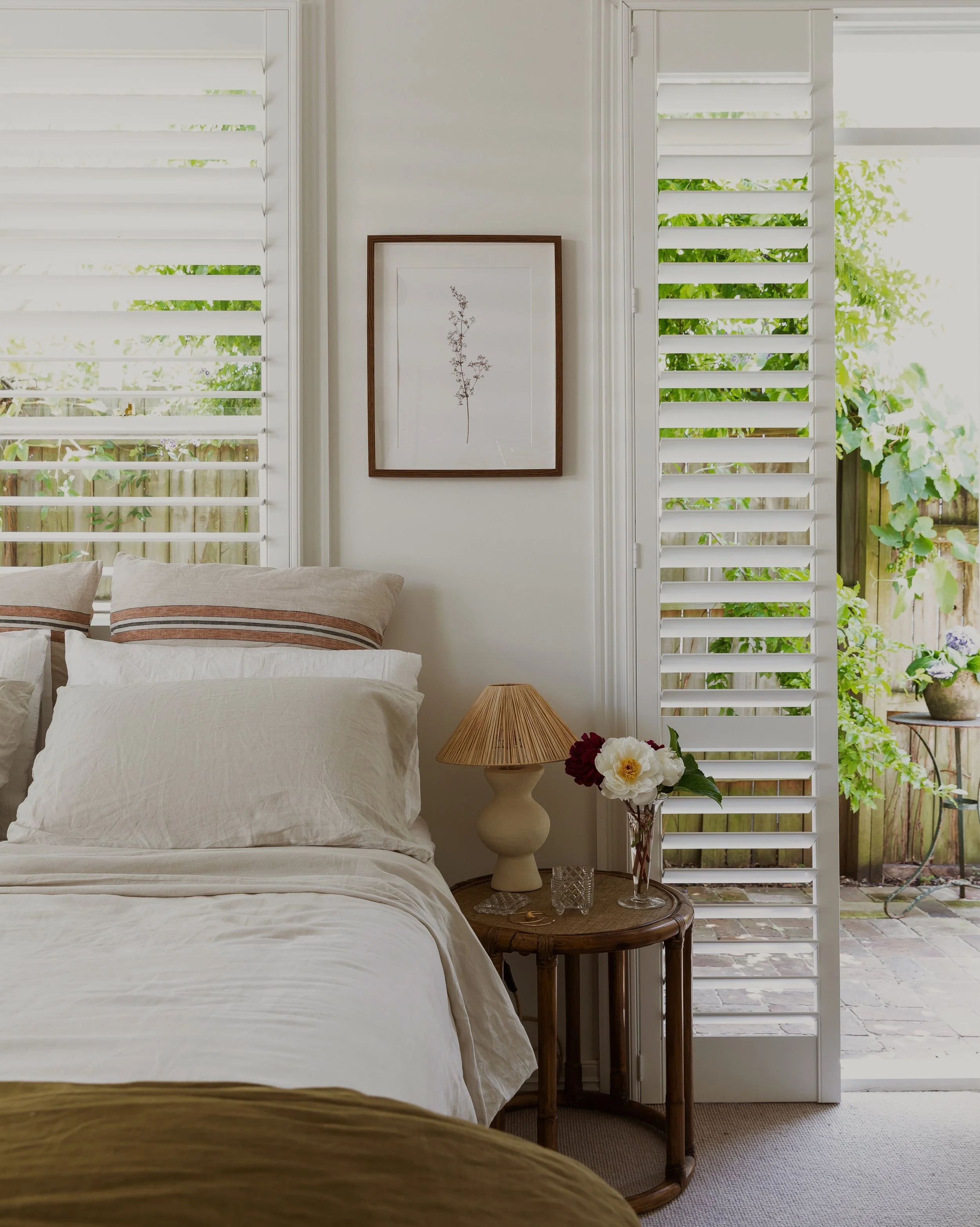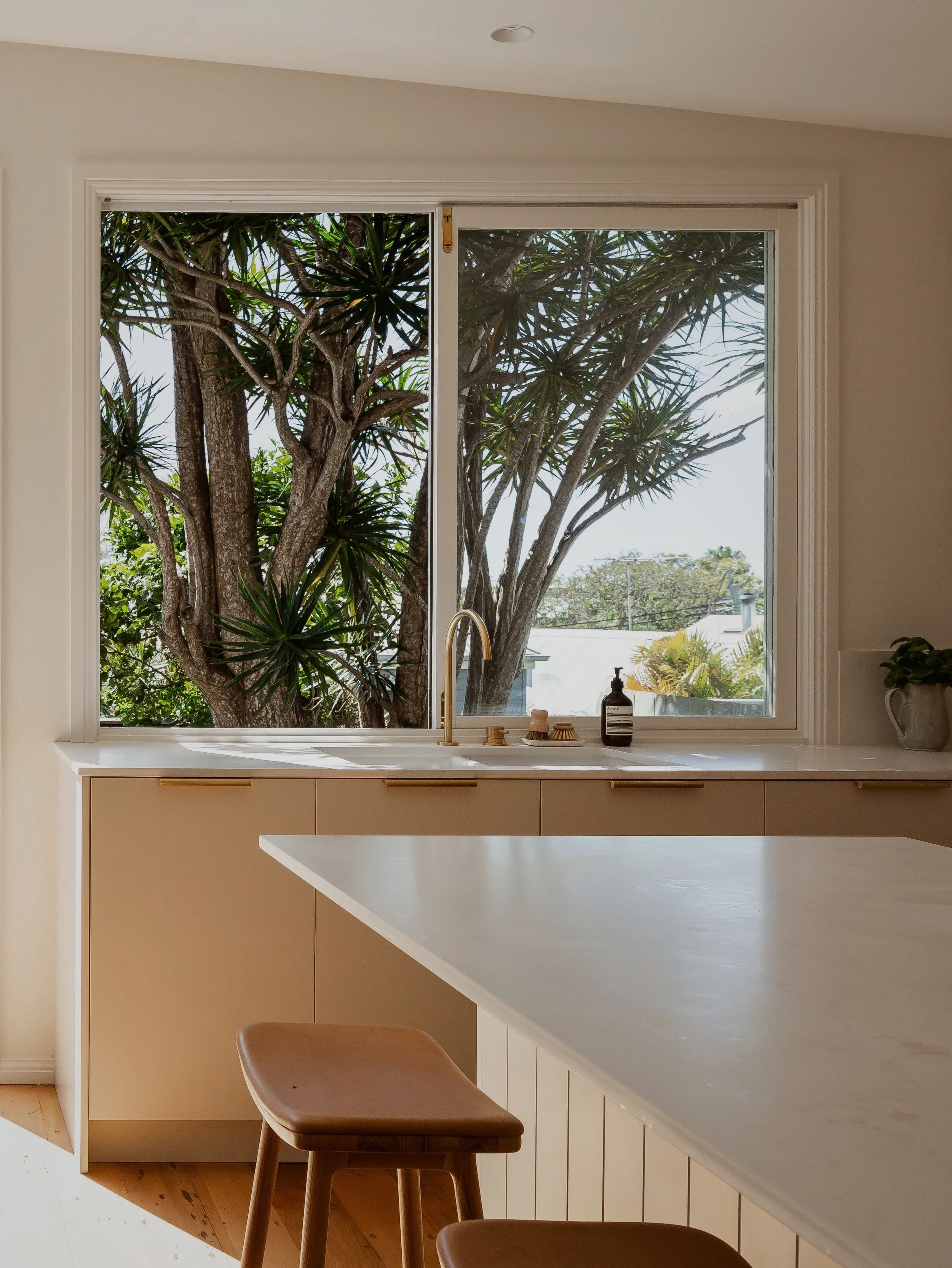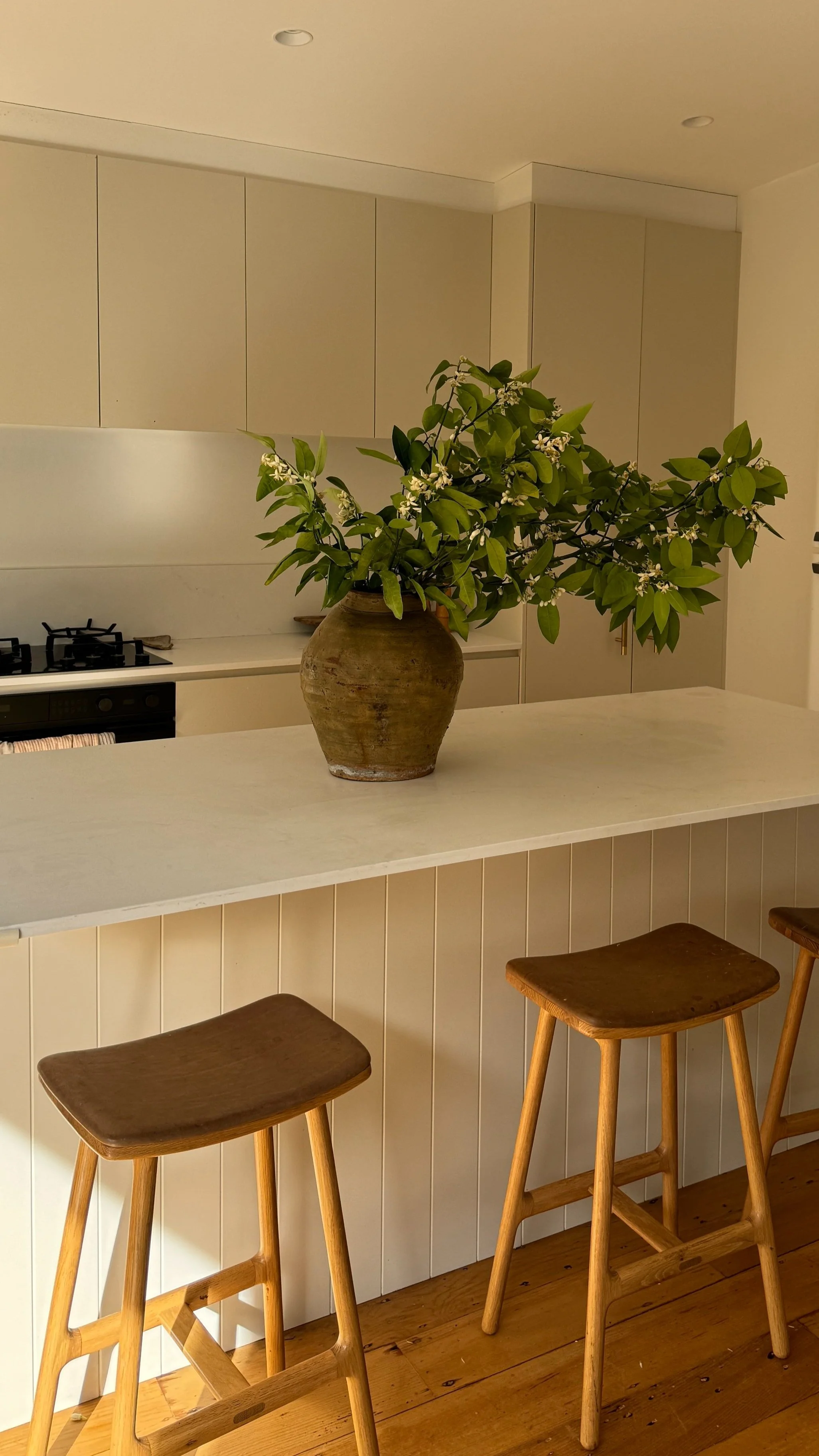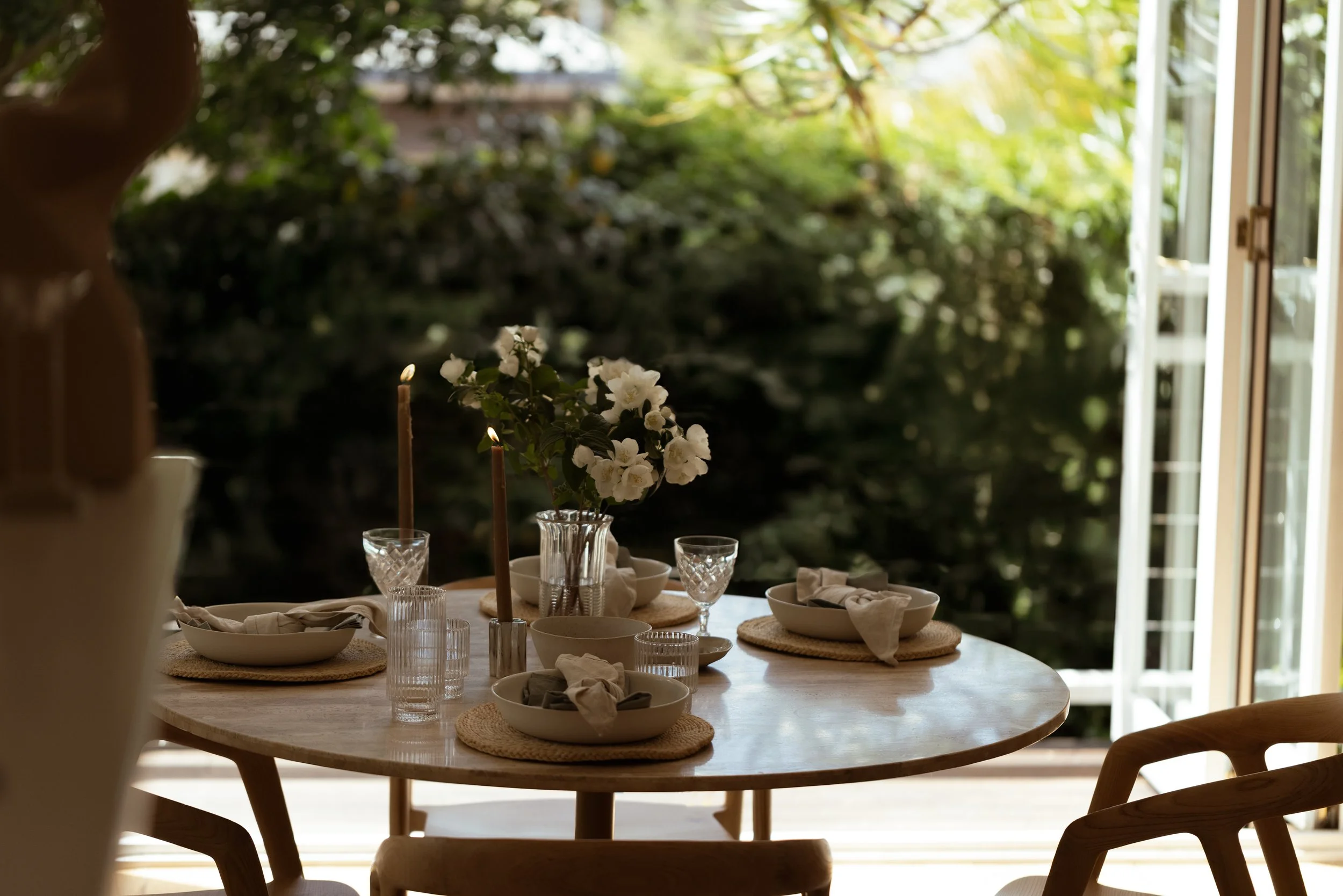Bringing the Outside In: Nature-Inspired Interiors
There’s something about stepping into a space that feels deeply connected to nature—it instantly puts you at ease. Whether you’re doing a renovation, or you just want to think about how you can connect your home to nature more, here are some simple ways to introduce biophilic elements into your space.
I often guide clients through the process of improving their connection to nature within their homes. Whether it’s through thoughtful material choices, maximising natural light, or creating seamless indoor-outdoor transitions, my approach is to create spaces that feel both beautiful and centered.
For me personally, designing my own home was about more than aesthetics; it was about supporting a way of living that was going to connect us more to nature. Time spent outdoors is central to our family’s life, and we were lucky enough to inherit some beautiful old trees in our garden, so that connection between the inside and outside of our home became a guiding principle in our design choices. The layout of our open plan kitchen, living, and dining area was designed to be almost entirely enveloped by glass windows, French doors, and a large bifold door—so the space often feels like an extension of the garden. It’s probably my favourite part of our home.
The Psychology of Biophilic Design
Biophilic design isn’t just a trend, it’s an innate human response to nature. It’s well known that integrating natural elements into interiors can reduce stress, improve focus, and enhance overall well-being. It’s why so many of us instinctively gravitate towards spaces that feel open, airy, and rich in organic textures.
The goal of this kind of design is to create a seamless relationship between indoor and outdoor environments. It’s about designing and decorating spaces that not only look beautiful but feel restorative. That’s why natural light, raw materials, and greenery play such a key role in shaping a home that feels both grounding and inviting.
Designing With Nature in Mind
Designing with nature in mind doesn’t have to mean a big renovation. It can be as simple as rethinking how a space feels and finding small ways to bring the outside in.
When we renovated our home, I kept coming back to that idea—wanting every decision to feel connected to what was just beyond the glass.
1. A Home That Frames Nature
If there’s a tree, garden view, or even just a patch of sky visible from your home, think about how you can draw attention to it, either through thoughtful design or simple styling choices. It might be placing a favourite chair where you can sit and enjoy the light, pulling back heavy curtains to open up the view, or keeping the area around a window clear so nothing competes with what’s outside.
One of the oldest trees in my garden, a huge Madagascar dragon tree, became the focal point of our kitchen design. We installed a large glass sliding window right in front of it, creating the effect of the tree almost becoming part of the kitchen itself. It transformed into a space that feels deeply connected to its surroundings, and it shifts with the movement of light throughout the day.
2. Natural Materials That Tell a Story
To honour that connection with nature, think about the materials you choose, both in the way you design and how you style a space. Raw timber, stone, linen, woven textures—these all have a way of softening a room and making it feel more grounded. Even smaller touches, like a timber stool, a handmade ceramic, or a woven tray, can bring warmth and character into a space.
In my own home, I kept the materials simple and organic. Earthy tones, natural textures, and finishes that feel warm and lived in. Natural materials have a way of ageing beautifully. They develop patina, they tell a story, and they create an atmosphere that feels rich and layered rather than overly polished.
If you’re updating or layering into a space, think about materials that not only look good now, but that will wear in over time. Pieces with texture or character can soften a space and add interest.
3. Optimising Natural Light
When it comes to how a space feels, light does more than we often give it credit for. It can shift the mood of a room instantly, making it feel brighter, calmer, or more expansive. Whether you’re planning a renovation or working with what you’ve got, paying attention to how light moves through your home can make a noticeable difference.
If your home doesn’t have large windows or access to abundant natural light, there are still ways to maximise what you have. Consider painting walls in soft, neutral shades that help bounce light around the room, creating a sense of airiness. Even the simple act of decluttering windowsills can allow more light to flood into your space, making a noticeable difference.
For the design of my own home, I made a bold design choice that some might consider a faux pas. I opted for no window dressings at all in our main living space. It goes against conventional interior wisdom, but for me, the uninterrupted flow of light and the unfiltered view of the garden was my priority. Sometimes there’s something liberating about embracing the raw beauty of a space rather than covering it up; this wouldn’t be the right direction in many spaces (and I’ll be the first to say most windows do feel naked without dressings), but it was the right decision for this particular space.
How to Bring the Outside In: Small Changes, Big Impact
Here are some simple ways to introduce biophilic elements into your space:
Layer Natural Materials:
Incorporate raw wood, linen, stone, and clay to bring warmth and depth to your interiors. Think wooden furniture, woven baskets, ceramic vases, and textured fabrics.
Introduce Greenery:
Whether it’s a towering indoor tree or a few sculptural branches in a vase, plants instantly soften a space and bring in a sense of life.
Embrace an Earthy Palette:
Muted greens, ochres, and warm neutrals mimic the tones found in nature, creating a soothing and timeless aesthetic.
Open Up Sightlines:
If possible, reimagine layouts to create uninterrupted views of the outdoors—whether it’s through windows, glass doors, or positioning furniture to take in the landscape.
At its core, designing with nature in mind is about more than just aesthetics. It’s about creating a home that invites you to slow down and feel more attuned to the world outside your door.


